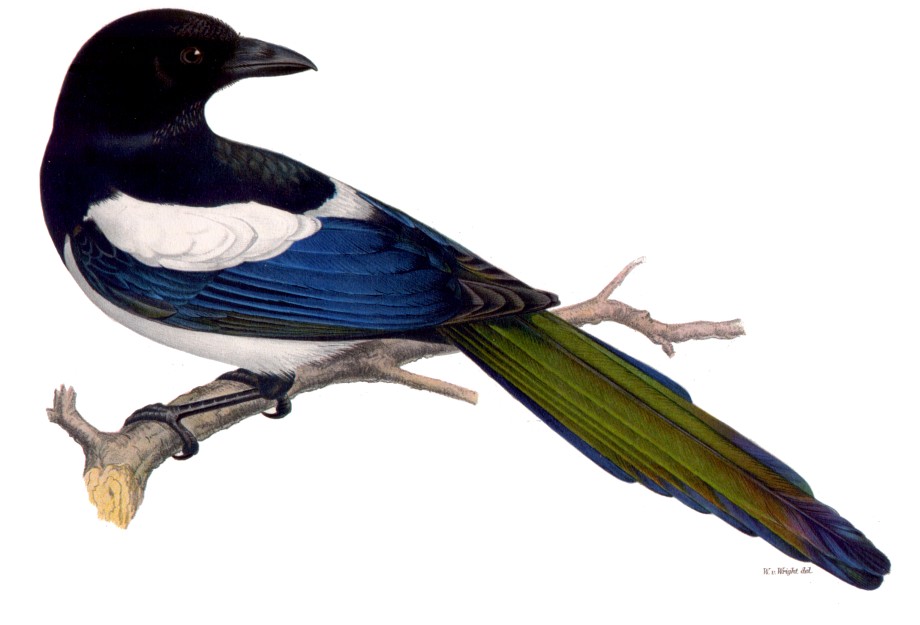- Pica (genus)
Taxobox
name = "Pica"

image_width = 240px
image_caption =European Magpie ("P. pica")
regnum =Animal ia
phylum = Chordata
classis =Aves
ordo =Passeriformes
familia =Corvidae
genus = "Pica"
genus_authority = Brisson, 1760
subdivision_ranks = Species
subdivision =
*"Pica pica"
*"Pica nuttalli"
*"Pica hudsonia"
*"Pica (pica) sericea""Pica" is the
genus of threespecies ofbird s in the familyCorvidae in both theNew World and the old. They have long tails and have predominantly black and white markings. One species ranges widely fromEurope throughAsia , one occurs all overNorth America and the third is restricted toCalifornia . They are usually considered closely related to the blue and greenmagpies of Asia, but recent research (Ericson "et al.", 2005) suggests their closest relatives are instead theEurasia ncrow s.Two or three species were generally recognized, the Yellow-billed and one or two black-billed ones. Recent research has cast doubt on the taxonomy of the "Pica" magpies (Lee "et al.", 2003). "P. hudsonia" and "P. nuttalli" are each other's closest relatives, but may not be different species. If they are, however, at least the
Korea n race of "P. pica" would have to be considered a separate species, too.*
European Magpie , "Pica pica"
*Yellow-billed Magpie , "Pica nuttalli"
*Black-billed Magpie , "Pica hudsonia"
*Korean Magpie , "Pica (pica) sericea"A prehistoric species of "Pica", "Pica mourerae", is known from
fossil s found inPliocene -Pleistocene boundary strata onMallorca .References
* Ericson, Per G. P.; Jansén, Anna-Lee; Johansson, Ulf S. & Ekman, Jan (2005): Inter-generic relationships of the crows, jays, magpies and allied groups (Aves: Corvidae) based on nucleotide sequence data. "Journal of Avian Biology" 36: 222-234. [http://www.nrm.se/download/18.4e32c81078a8d9249800021299/Corvidae%5B1%5D.pdf PDF fulltext]
* Lee, Sang-im; Parr, Cynthia S.; Hwang,Youna; Mindell, David P. & Choea, Jae C. (2003): Phylogeny of magpies (genus "Pica") inferred from mtDNA data. "Molecular Phylogenetics and Evolution" 29: 250-257. DOI|10.1016/S1055-7903(03)00096-4 [http://www.ummz.lsa.umich.edu/molsys/LPHMC03.pdf PDF fulltext]
Wikimedia Foundation. 2010.
